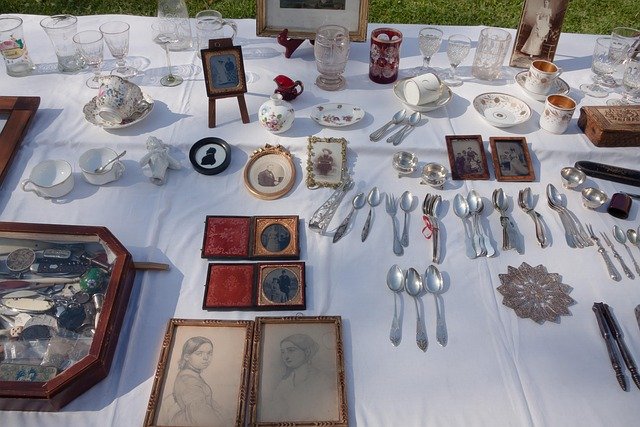Fees, Photography & Timelines (Step-by-Step)
Thinking about selling coins or a collection? Auction can deliver maximum exposure, professional presentation, and competitive bidding—but it comes with timelines, fees, and a process you should understand before you ship a single slab. This guide walks you through who should consign, how it works, what it costs, and how long it takes, with practical tables and checklists you can use immediately.
Why (and when) auction is the right choice
Choose auction when you want:
- Competition: multiple qualified bidders in the room/online.
- Presentation: studio photography, detailed attribution, pedigree research.
- Market discovery: true current value for scarce/high-grade material.
- Set premiums: complete sets and pedigreed groups sell best via auction.
Skip auction (or use a different route) when you need instant liquidity, have low-value/common material, or can live with a wholesale number from a dealer. Not all coins suit auctions; check liquidity first.
Auction vs. other selling methods
| Method | Pros | Cons | Best For |
|---|---|---|---|
| Auction | Max exposure, pro photography/cataloging, competitive bidding | 3–6 month timeline, fees, uncertain hammer | Keys, high grade, rare varieties, complete sets |
| Direct dealer sale | Fast payment, zero buyer hassle | Lower price (wholesale margin), limited competition | Common material, mixed lots, time-sensitive needs |
| Private sale | Control terms, possibly low fees | Requires your buyer network, slower | Selling to known collectors in your niche |
| Online marketplace (DIY) | Full control, broad audience | Scams, returns, platform fees, time-intensive | Lower-value slabs, duplicates, common types |
Rule of thumb: If you can write a compelling catalog description for the coin (pedigree, pop report scarcity, condition census, variety significance), it probably belongs at auction.
Major auction houses (and who they suit)
- Heritage Auctions – Largest reach, deep bidder base; broad from mid-range to elite.
- Stack’s Bowers – Prestigious US and world material; strong for pedigreed/rarities.
- Legend Rare Coin Auctions – Boutique, high-end certified US coins only.
- GreatCollections – Online-only, quick cadence; friendly to smaller consignments.
- Regional houses – Useful for local collections or specialties; diligence required.
Choosing the house: Match the strength of their bidder list to your series (e.g., VAM specialists, early copper, world crowns). Ask each house for recent comparable results in your category.
Minimum value requirements (typical)
- Total consignment minimums: $5,000–$10,000+ for major houses (flexible for high-quality single coins or named sets).
- Single-lot minimums: $500–$1,000+ per coin (below that, items may be grouped).
- Exceptions: Complete sets, pedigreed cabinets, rare varieties often welcomed regardless.
- Lower minimum option: GreatCollections frequently accepts small consignments.
The consignment process (step-by-step)
- Initial contact & submission
Send sharp photos or slab cert numbers with a rough inventory. Ask for estimate ranges, likely auction dates, and fee proposals (commission/photography/insurance). - Evaluation & acceptance
The house confirms what they’ll take, how they’ll lot items, and whether grading/variety attribution is recommended. - Grading/authentication (if needed)
The house can submit to PCGS/NGC. You pay grading; some houses advance fees and net them from proceeds. - Cataloging & lot assignment
Specialists write descriptions, attribute varieties (e.g., VAMs), and group lesser items strategically. - Photography
Studio images (and sometimes video) highlight luster, toning, and devices. Quality photos raise confidence and bids. - Marketing & promotion
Printed/online catalogs, email blasts, social promotion, targeted outreach to known collectors, and lot-viewing sessions. - Auction event
Live, online, or hybrid. You’ll see pre-bids, live action, and final hammer in your account. - Settlement & payment
After the sale finalizes (and returns window closes, if any), you receive a detailed statement and payment.
What it costs (fee structure)
| Fee | Typical Range | Notes |
|---|---|---|
| Seller’s commission | 0%–15% (tiered) | Negotiable for value/volume; see tiers below |
| Photography | $0–$50 per lot | Often waived on higher-value coins |
| Insurance (while in custody) | ~0.5%–1.0% of declared value | Sometimes bundled |
| Grading/attribution | $20–$50+ per coin | If the house submits on your behalf |
| Catalog page/premium placement | Rare | Reserved for elite coins; negotiate |
| Reserve not met / buyback | Fixed or % fee | Clarify in writing before consigning |
Example commission tiers (illustrative)
- $0–$1,000 hammer: 10–15%
- $1,000–$10,000: 10%
- $10,000–$50,000: 5–10%
- $50,000+: 0–5%, often negotiable; seven-figure lots may be 0%.
Buyer’s premium is paid by the buyer (often 15–20%+) and does not reduce your proceeds, but bidders mentally price it in—so it can slightly lower hammer vs. a no-premium world.
Should you set a reserve?
- Reserve = minimum price you’ll accept.
- Pros: Protects downside on rare/pricey coins.
- Cons: Fewer bidders; risk of unsold (fees may still apply).
- Guide: Reserve at ~80–90% of the low estimate. Use no-reserve for popular, liquid items to maximize competition.
Photography: the silent multiplier
Do not skimp. Great photos:
- Surface and luster: show the cartwheel, not just the color.
- Toning: angles and lighting to capture rainbows without exaggeration.
- Problem coins: honest, sharp images build trust and reduce returns.
- Video: increasingly used for 5-figure+ coins to show flash and mirrors.
Ask the house to approve final images with you for marquee lots.
Catalog descriptions, attributions & provenance
- Certified grade (PCGS/NGC), plus eye-appeal commentary.
- Varieties (VAMs, RPMs, overdates), die states, pedigrees—all add bidders.
- Provenance (named collections, old holders, plate coins): lead with it in the title line when possible.
Timeline (realistic)
| Stage | Typical Duration |
|---|---|
| Submission → Acceptance | 1–2 weeks |
| Grading/Authentication (if needed) | 2–4 weeks |
| Cataloging + Photography | 2–6 weeks |
| Marketing window (pre-auction) | 4–8 weeks |
| Total (ship to payment) | ~3–6 months |
Expedited online-only venues can be faster, but flag it early—calendar space fills months ahead of major shows.
Payment terms
- Settlement: Usually 30–45 days after auction (house confirms cleared funds from buyers).
- Method: Check, ACH, or wire.
- Statement: Lot-by-lot detail (hammer, commission, any fees).
- Unsold lots: Choose return (insured shipping) or re-offer in a future sale.
If a lot doesn’t sell
- Reserve not met: Re-consign with lower reserve, move to a different venue, or request return.
- Fees: You may still owe photography/insurance; clarify beforehand.
- House buyout: Rare; occasionally offered for desirable unsolds at wholesale.
Negotiating better terms
- Value & volume talk: High aggregate estimates or complete collections unlock lower commissions.
- Exclusivity: If multiple houses want your material, use that leverage.
- Waivers: Ask to waive photo and insurance fees for featured lots.
- Placement: Target a prestige sale (e.g., alongside a key collection) for best bidder turnout.
Prep: what to do before you consign
Do:
- Inventory with cert numbers, grades, varieties, and notes.
- Photograph everything (front/back/labels) for your records.
- Include receipts and provenance; provide pedigree notes.
- Consider grading borderline AU/MS coins; ask the house first. Pre-sale grading can unlock better placements.
- Selling across borders? Pair with international selling tips.
Don’t:
- Clean coins—ever.
- Crack out slabs without strategy.
- Over-declare values for insurance; use a defensible figure.
Shipping & insurance
- Use Registered Mail (USPS) or a reputable insured courier per house instructions.
- Double box, tamper-evident tape, and interior packing that prevents movement.
- Keep tracking & photos of contents. Require adult signature upon delivery.
- Once received, items should be under the house’s vault insurance—get this in writing.
Taxes (talk to a pro)
- Auction proceeds are taxable. Treatment depends on basis, holding period, and jurisdiction.
- Potential reporting (e.g., high-volume 1099-K equivalents or local rules).
- This is education, not advice—consult a tax professional for your situation.
Alternatives to traditional, live-catalog auctions
- Online-only timed sales: Faster cadence, lower friction for mid-range slabs.
- House buy-it-now / make-offer programs: hybrid convenience at reduced suspense.
- Consign to dealer inventory: Not an auction, but hands-off for you with clear net pricing.
Red flags: avoid problem houses
- Upfront “listing” fees for regular lots (elite exhibitions aside).
- Unrealistic estimates or guaranteed prices to win your business.
- Pressure tactics or poor communication during intake.
- Opaque fee schedules—insist on a written contract itemizing everything.
What to expect (results)
- Realizations often cluster around 80–110% of presale estimate—but can exceed for fresh, properly promoted material.
- Best outcomes: rare, high-grade coins, fresh to market, complete sets, and items with great photos + provenance.
Decision tree: Is auction right for you?
- Is your coin/set rare, high-grade, or strongly pedigreed?
- Yes → Auction.
- No → Next question.
- Is total value ≥ $5,000 or any coin ≥ $1,000?
- Yes → Auction or GreatCollections.
- No → Consider dealer/DIY sale.
- Can you wait 3–6 months?
- Yes → Auction works.
- No → Dealer or private sale.
- Do you want pro photography, attribution, and widest bidder pool?
- Yes → Auction.
- No → Direct sale.
Consignor’s checklists
Intake Packet
- Inventory (cert #, grade, variety, notes, reserves if any)
- Photos of each coin (slab front/back)
- Provenance documents (receipts, pedigrees, prior lot citations)
- Written fee agreement (commission, photo, insurance, grading, reserve terms)
- Shipping instructions & insurance confirmation
Pre-Auction
- Approve key lot descriptions and photos
- Confirm auction date and placement (session, feature)
- Share any additional pedigree/variety data
- Verify payment timing post-auction
Post-Auction
- Review prices realized vs estimates
- Confirm settlement date and payment method
- Decide on unsold lots (return or re-offer)
Auction maximizes exposure—if you manage the process
Auction shines when your material deserves a stage: rarities, high grades, pedigrees, and sets. Go in with clear timelines, a written fee schedule, reserve discipline, and insist on great photography and accurate attribution. Do that, and you give the market every reason to show up and compete for your coins.



